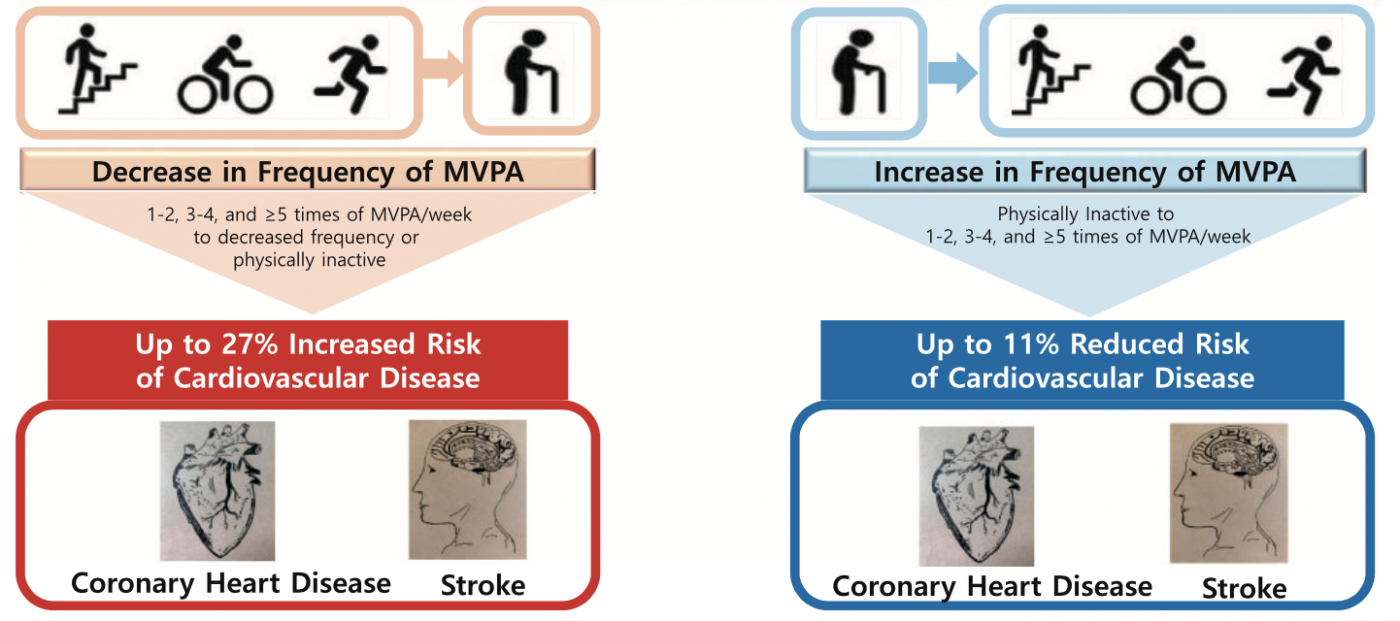People getting older sometimes talk of slowing down, but new research suggests we should be doing the opposite: speeding up.
A national study of 1.1 million Koreans aged 60 and over has reported that an increasing level of medium to vigorous physical activity (MVPA) was associated with a significant reduction risk of cardio vascular disease (CVD).
The subjects had undergone two consecutive national health screenings and were prospectively assessed for risk of CDV according to changes in frequency of physical activity.
Those that decreased their MVPA rate attenuated the cardiovascular health benefits.
"Given the dose-response nature of these associations, engaging in higher or consistent physical activity may help older adults prevent future risk for CVD events,” the researchers concluded.
The study was undertaken by a team based in both Seoul, Korea, and at Duke University in the US.
The report says that insufficient physical activity is one of the easily modifiable risk factors for cardiovascular events and mortality worldwide, along with other lifestyle-associated risk factors such as cigarette smoking and high sodium diet.

Although the preventive role of frequent physical activity has long been recognised for reducing CVD risk, it has been uncertain if changes in the level of activity, especially a decline in PA in older adults, was a factor in CVD risk.
"In this large, population-based cohort study from the NHIS database in the Republic of Korea, we found real world evidence that the older adults with insufficient physical activity who increased frequency of MVPA to more than 3–4 times per week had a significantly lower risk of CVD events as compared to those who were continuously physically inactive, and this association was consistent among those with disabilities and chronic conditions,” the authors say.
"In contrast, decrease in frequency of MVPA was associated with a significantly elevated risk of CVD events as compared to consistently engaging in more than five times of MVPA per week in older adults.
The researchers found that the older adults with chronic conditions (diabetes, hypertension, and hypercholesterolaemia) who later increased their frequency of MVPA from being physically inactive to 3–4 times per week had a significant reduction in CVD risk.
"Our results have both clinical and public health implications that support the need to encourage higher frequency of MVPA among physically inactive older adults and maintaining frequency of MVPA among those who are already physically active for substantial risk reduction in CVD risk.”
SEE THE FULL STUDYBecome our friend
Find out more about Bicycle Network and support us in making it easier for people to ride bikes.


